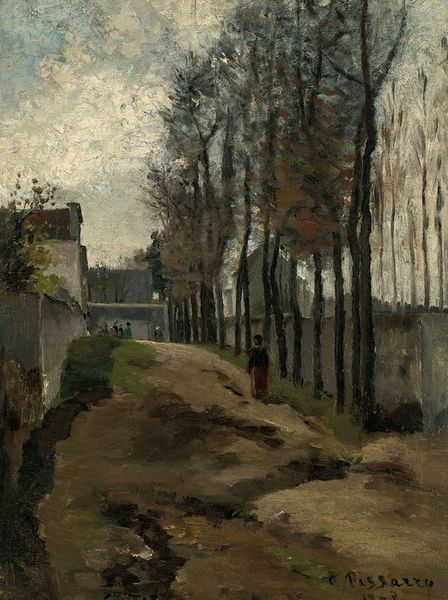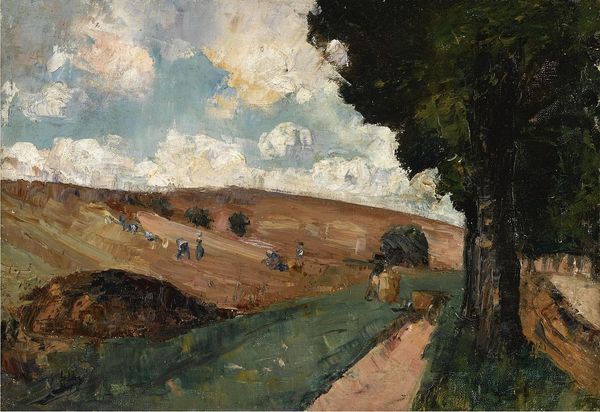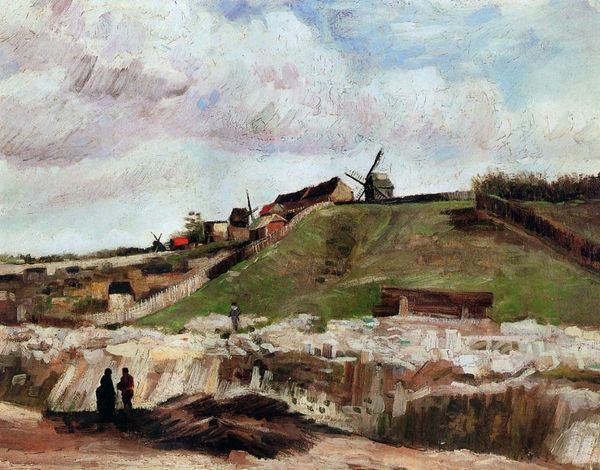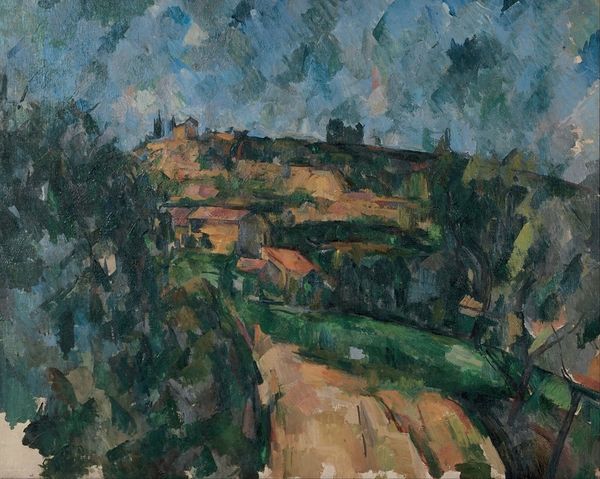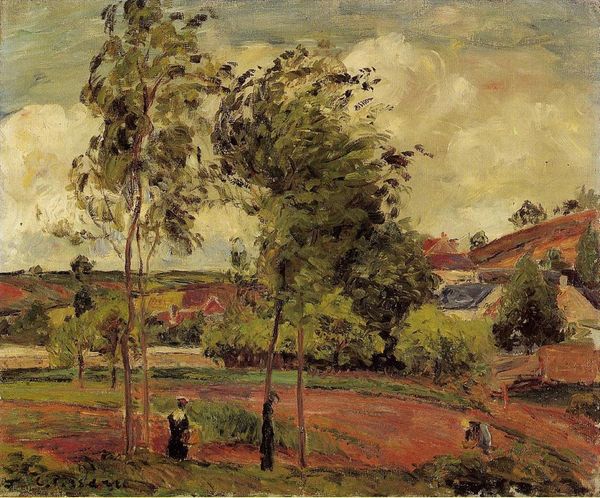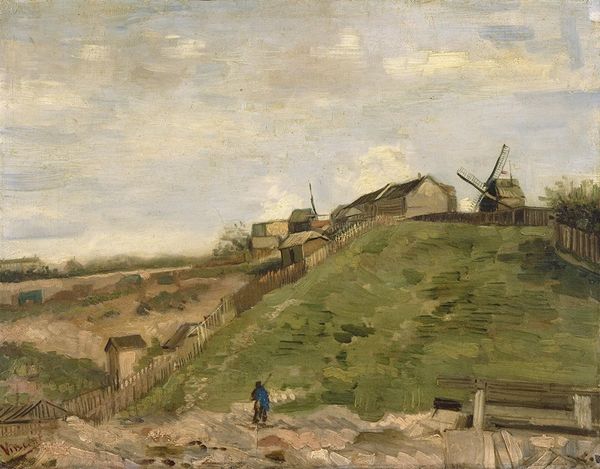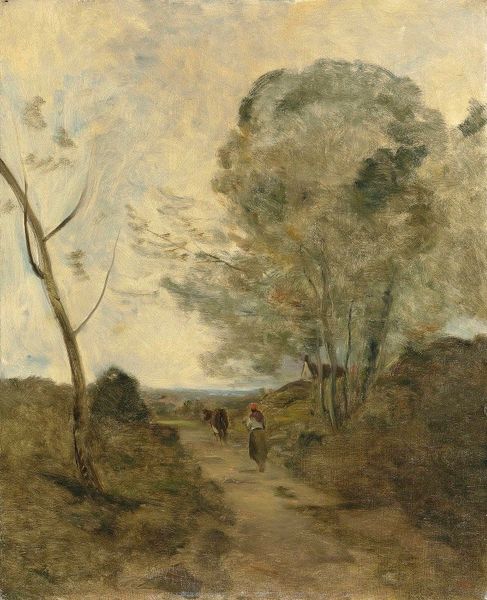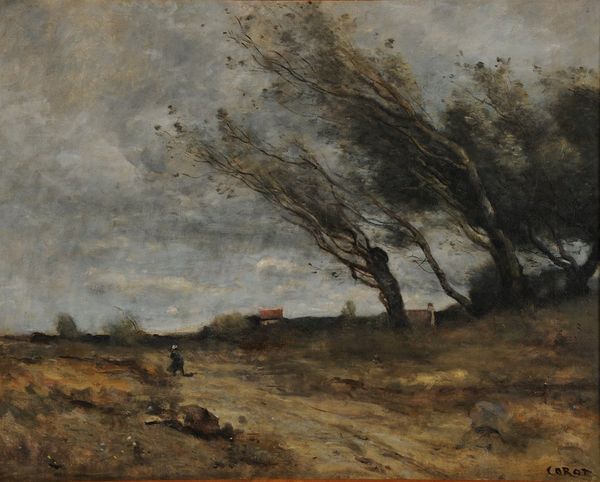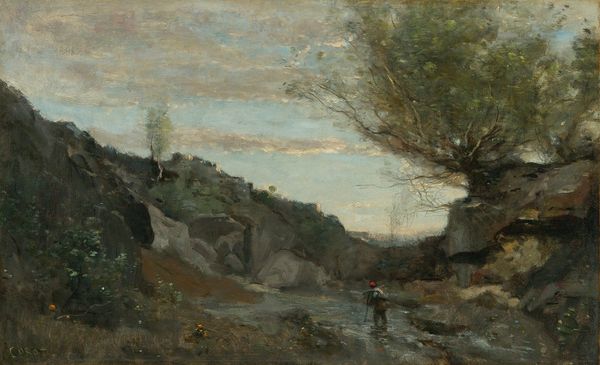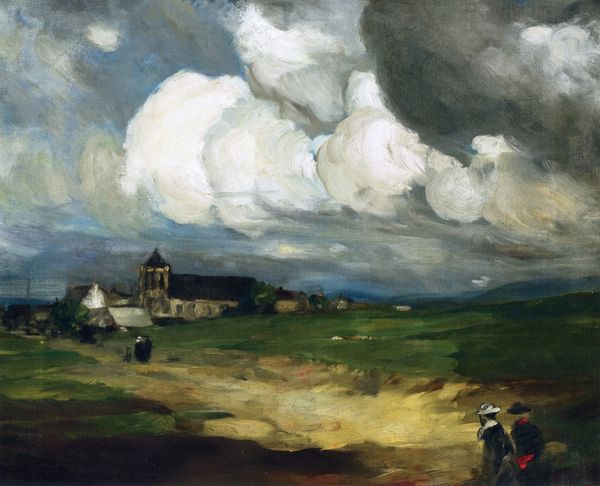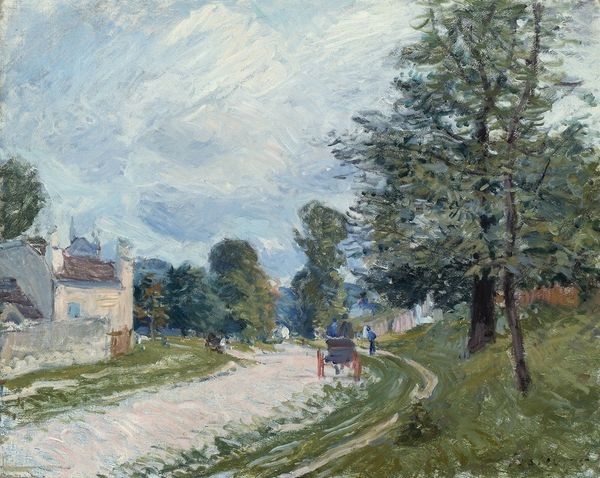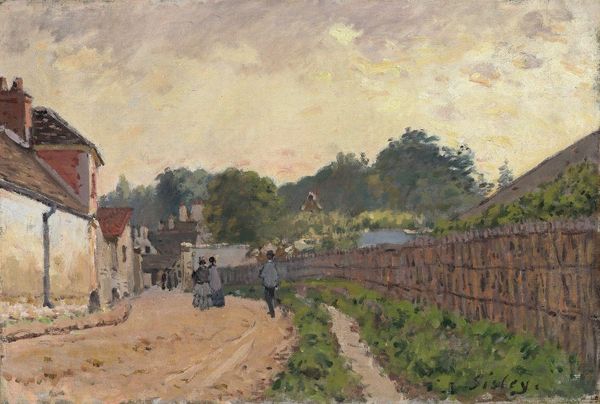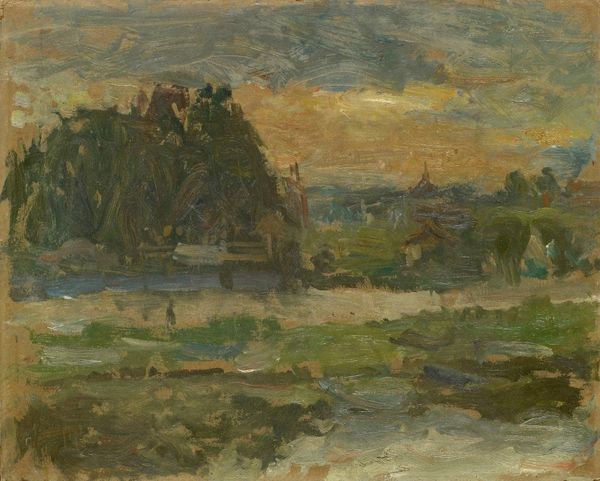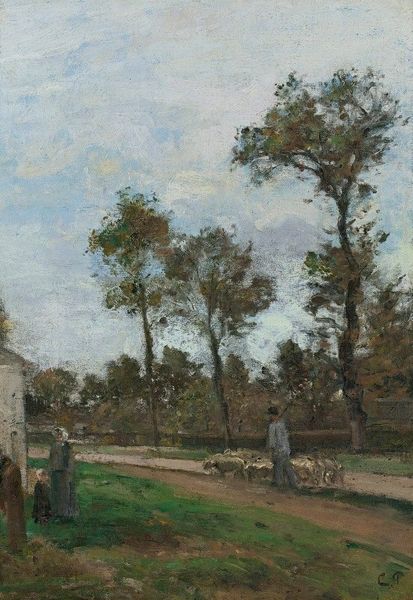
Copyright: Public domain
Curator: Welcome. Here we have Paul Cézanne's "Landscape," an oil painting likely completed en plein air in 1867. Editor: It strikes me as rather somber. The muted tones and heavy sky give it a weighted, almost oppressive feeling. Curator: The somber quality you perceive is interesting, especially considering Cézanne's later embrace of brighter, more vibrant colors. What is often missed with Cézanne is how his early landscapes engaged with themes of labor, class, and the urbanization pressing in on the working class, especially in the Parisian banlieue. It’s also painted during the early years of his close friendship with Emile Zola; you sense their shared socio-political ideals. Editor: The way Cézanne structures the space is compelling. The buildings, almost stark in their geometric simplicity, and that winding road pull the eye into the composition, and the brushstrokes, although loose, still suggest depth. The colour seems like more of an evocation of something observed rather than anything purely naturalistic. Curator: Precisely. These "impressions" are steeped in his readings of people like Proudhon; an art reflecting lived realities as a social and cultural experience. His early embrace of plein air becomes almost secondary to rendering the mood, tensions, and transformations he's trying to highlight. Look at the figure almost concealed along the left; what narratives might exist behind their presence? What anxieties linger from those obscured stories? Editor: I find I'm drawn to how Cézanne’s technique begins to push beyond the purely representational, moving toward something more…abstracted, more like a study in form and texture. And as always with his paintings, a profound engagement with colour relationships, from muted greens to dull yellows. Curator: I find this early piece crucial to how his vision expanded through those socio-political relationships in shaping, transforming, and disrupting tradition through his career. Editor: Well, regardless of his intention, there's an undeniable tension captured here that lingers long after one stops looking. Curator: Absolutely. It reminds us to question what we often celebrate as "landscape" and how its meaning intertwines with stories of the oppressed in broader social and political systems.
Comments
No comments
Be the first to comment and join the conversation on the ultimate creative platform.
